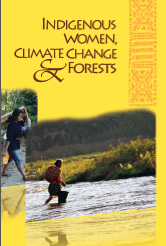Indigenous women, climate change and forests
Summary
Indigenous peoples and civil society actors, together with some States Parties, succeeded in getting climate change decisions and agreements to recognize the link between human rights and climate change. The Cancun Agreements of the 16th UNFCCC Conferenceof Parties (COP 16) included references to human rights and also noted the existence of the UN Declaration on the Rights of Indigenous Peoples (UNDRIP). This is a significant development because this affirms the importance of differentiating vulnerabilities and potentials on the basis of geography, gender, age, minority or indigenous status, and disability when analyzing and addressing climate change impacts.The process of differentiating impacts of climate change on women, indigenous peoples, farmers, among others, and their contributions to mitigation and adaptation are crucial when climate change policies are formulated and programmes are designed, implemented and evaluated. The extent of work done around differentiation can define the success or failure of projects andprogrammes. Addressing climate change from this perspective helps surface issues of social justice, equality and empowerment, which sometimes are ignored in the climate change debates.

 Twitter
Twitter Google+
Google+ Facebook
Facebook LinkedIn
LinkedIn Digg
Digg del.icio.us
del.icio.us StumbleUpon
StumbleUpon
 A project of the
A project of the